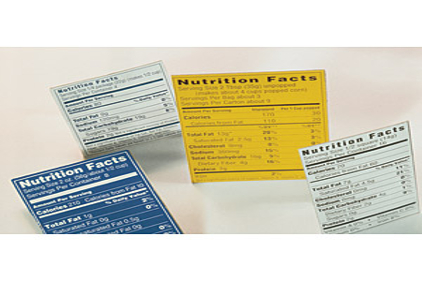Are you thinking about restocking your packaging supplies? If you are, then you have a lot to think about before making the investment. The most important consideration is how long you will use the packaging. If you are going to run through it fairly quickly, then you should be good to go. But if you expect to use it for a while, there may be a few things to consider when deciding how much to buy.
Every week, it seems like a new government rule, guideline or proposal surfaces that affects food packaging. Recently, a new Food and Drug Administration (FDA) ruling on gluten-free labeling was finalized. While it will impact a narrow segment of the baking industry, it’s a precursor of bigger things to come, the biggest of which are the proposed revisions to the Nutrition Facts Panel. That doesn’t even take into consideration the various proposals about labeling for partially hydrogenated oils and sodium, as well as front-of-package labeling and genetically modified organisms (GMOs). Well, you get the idea.
Substantively, the Nutrition Facts Panel proposal attempts to address several thorny issues, such as added sugars, fiber, trans-fats, sodium and vitamin D. However, the proposal also significantly alters the format and potentially the size of the current panel. Thus, regardless of the outcome of the substantive debate, there’s a high likelihood that some change will be made to the graphics.
The real challenge for bakers and their packaging suppliers is the two-year implementation timeline for any changes, especially given the already existing packaging backlog. Due to pressure exerted by the White House on the FDA to finalize the rule in the coming year, it will be incredibly difficult to expand the timeline.
Recognizing the significant cost and operational challenges a new Nutrition Facts Panel presents to the industry, the American Bakers Association (ABA) is leading a group of more than 15 food associations in insisting that the FDA rely on sound, peer-reviewed science to determine the substantive issues. The group also is asking for enough time—at least three to five years—to implement any changes, while avoiding severe stress on the packaging supply chain.
When the Nutrition Labeling Education Act (NLEA) passed in the 1990s, there were only one-third the number of products on the market as there are today. Simple math should be convincing enough for the FDA to grant as much flexibility as possible for bakers to avoid hundreds of millions of dollars in packaging change costs, (among others).
I would be remiss to not call out the very significant contributions of the ABA’s Food Technical Regulatory Affairs Committee (FTRAC) in formulating our extensive and substantive comments to the FDA. Also, I would like to thank the ABA’s packaging members for their invaluable assistance and the Retail Bakers of America (RBA) for its support in this undertaking. While ABA’s comments are just the opening move in what is likely to be a protracted battle, our combined opening salvo was very strong because of the unified engagement.
Robb MacKie is the president and CEO of the American Bakers Association (ABA) and a chief advocate and spokesperson for the $102-billion wholesale baking industry. A recognized leader in the Washington business community, MacKie serves as a board member of the Business Industry Political Action Committee (BIPAC) and is a member of the Chamber of Commerce’s Committee of 100. He also participates on the Kansas State University’s Grain Science Advisory Committee.





